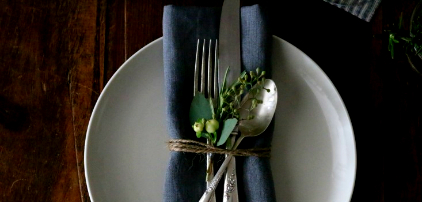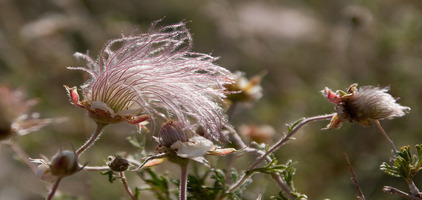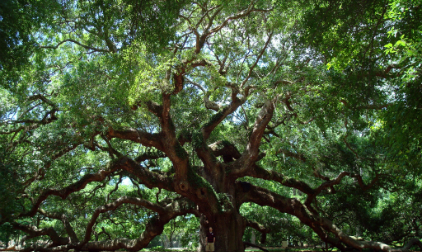by Chris Winslow
Many of you already know that fall is the perfect time to plant trees.
The air temperature is cooling off while the ground remains warm.
But fall is also the perfect time to fertilize trees.
To do this, you need to pick a balanced fertilizer that contains nitro-
gen (N), phosphorus (P), and potassium (K). These three essential
macronutrients are the building blocks of a healthy, vigorous tree.
Nitrogen builds new cell growth and is needed for overall plant
growth and development. Phosphorus helps roots develop. Potass-
ium makes their stems strong, and also helps with disease-resistance
and cold hardiness.
In addition gardeners need to choose fertilizers that contain micro-
nutrients and beneficial bacteria. These are the elements that the
tree uses in lesser amounts than the macro, primary plant foods.
These micronutrients should include magnesium, iron, and sulfur.
Sulfur is very important as it helps to drop our alkaline pH, and
make nutrients such as iron (Fe) more available. This is essential
for trees that like a more acid pH.
A good choice for a fertilizer, available at many nurseries, is called
‘Tree-Tone.’ It’s organic, contains all these macro and micronutrients,
and costs less than $10 for a 4 lb bag. This has been a very popular
product with customers at my nursery.
Feed small trees by spreading the right amount of fertilizer under
and slightly beyond the branch spread. Watering in will dissolve
the fertilizer and get it into the root zone.
A good fertilizer rate is 10 pounds per 1,000 square feet of canopy –
the area within the drip line of the tree.
For larger trees, dig a series of narrow holes that are 12 inch deep,
2-3 inches wide, and 2 – 3 feet apart. These should be under the
drip line of the tree. Put the correct amount of fertilizer evenly in
these holes and backfill with soil. Water thoroughly.
The best time to fertilize established trees is in the fall after the
leaves have dropped, and again in the spring when new growth
appears. Happy gardening everyone!







